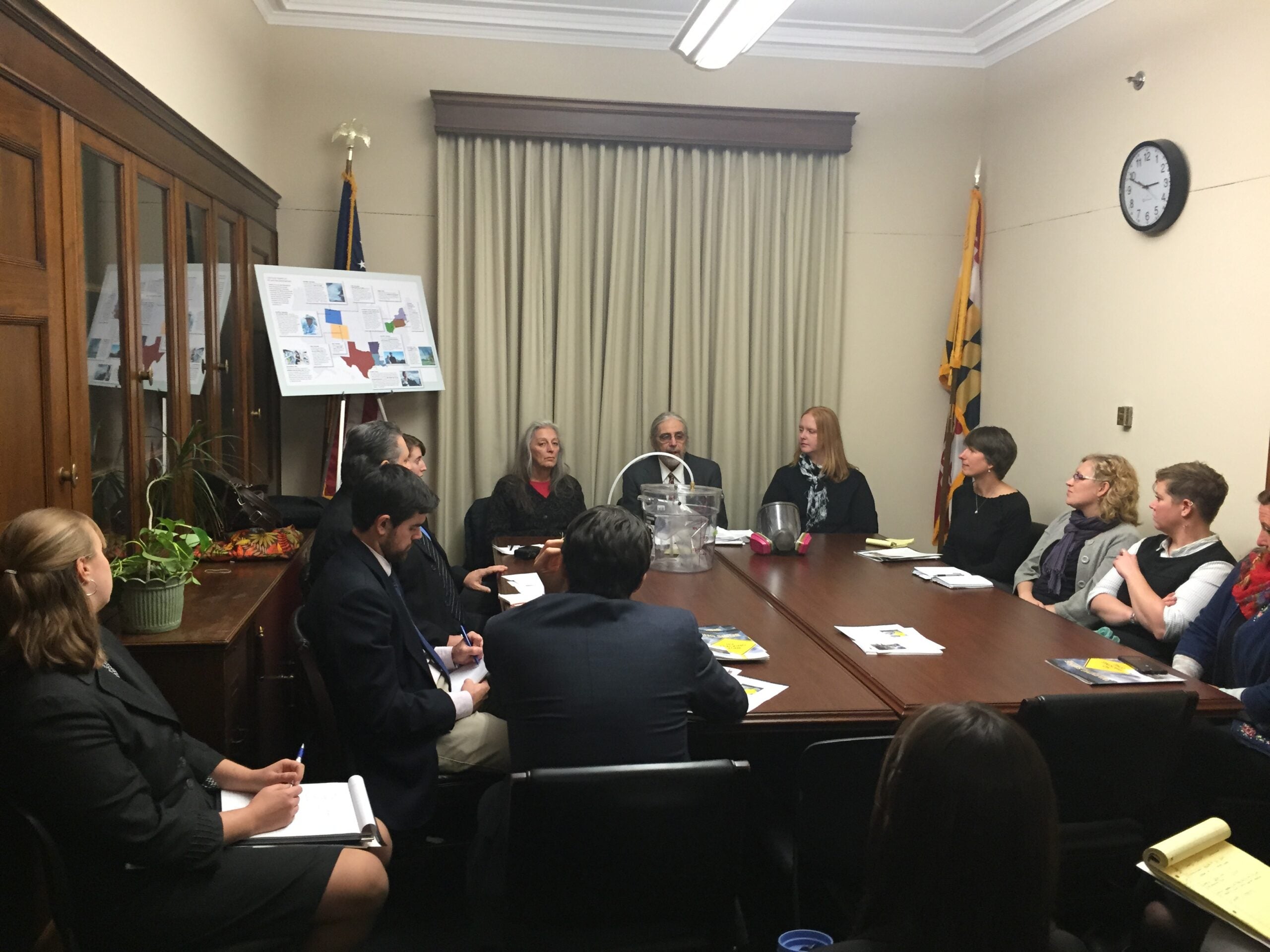Community Leaders Bring Data-Driven Stories to Washington, D.C.
In November, community members flew to Washington, D.C., to raise awareness about a new report examining fracking's impact on air quality.

This page was published 11 years ago. Find the latest on Earthjustice’s work.
Last month, while sitting around the conference tables of Washington, D.C.’s biggest movers and shakers, I saw looks of shock come across the faces of those listening to local community activists explain why oil and gas drilling makes it dangerous to breathe.
They would know. After all, these concerned community members are the ones who took air quality data that appeared in a recently-released report and the first peer-reviewed study of hazardous air pollutants near oil and gas development sites across the U.S.
Taught by experts from the Global Community Monitor, the activists went out into their communities and took air samples in areas where they observed certain symptoms, such as headaches, dizziness or breathing problems. In total, community members from six states—Arkansas, Colorado, Ohio, Pennsylvania, New York, and Wyoming—collected 76 samples that were then analyzed by scientists.
The findings were worse than many community representatives could have imagined. They found carcinogens such as formaldehyde and benzene, some in concentrations above EPA’s most hazardous cancer risk level. Hydrogen sulfide, a nerve and organ toxin, was also found in concentrations that often exceeded health and safety standards. In Wyoming, one sample revealed that hydrogen sulfide concentrations were 660 times higher than the level the EPA classifies as immediately dangerous to human life. In addition, almost 40 percent of the samples collected contained volatile compounds in concentrations above federal standards for cancer level risk.
When I met the community members the night before their busy day of meetings in D.C., I saw a group of concerned citizens who didn’t choose this line of work—it chose them.
Frank Finan of Susquehanna County, Pennsylvania, who traveled to D.C. with his daughter, Kelly, was set to retire when he began to see the impacts of natural gas development near his home. Instead of retiring, he spent much of his savings to buy a specialized camera that allowed him to detect gases and other emissions that cannot be seen by the naked eye.
Emily Lane, one of the co-leaders of the local group Arkansasfracking.org, became involved because she suspected that the increased seismic activity occurring in her home state of Arkansas was due to the rise in hydraulic fracturing in the area. After learning more about gas development and witnessing her neighbors experience hair loss, memory loss, nosebleeds and fainting, she became concerned with the effect of this extractive process on air quality.
Deb Thomas is a resident of rural Wyoming, the executive director of Shale Test, and co-author of the report. She has dedicated her life to addressing the negative effects of oil and gas development, first on water quality and now air. She believes that this report is vital because it gives people information that they can take to their health providers. Prior to this study, these communities had no idea what they were being exposed to and how it could adversely affect their health and well-being.
Frank, Emily and Deb, along with representatives from the groups that worked on the report, met with numerous NGO partners and decision makers to inform them about the impacts that communities are facing from oil and gas development. Each of the individuals involved in this study faced much adversity in getting this information out to the general public, including being ostracized by their own communities and ignored by local officials. However, in D.C., they had a welcome audience. Throughout the day, community members were thanked for their dedication and sacrifice, with some even hailing them as heroes advocating for clean air and a healthy environment for their families, neighbors and fellow citizens.
“Drilling works perfectly on paper, but things don’t go right in real life,” says Frank.
This report allows communities the access to information regarding the air they breathe. The time is ripe for more meaningful change in the regulations for oil and gas development.
This study was organized by Coming Clean and Global Community Monitor. Coming Clean is a national environmental health and justice network of more than 200 organizations working together to reduce harmful exposure to toxic chemicals. Global Community Monitor works worldwide to empower communities at risk with the technology and expertise to document toxic exposures.
For more information on the report, read the guest blog post from Caroline Cox, research director at the Center for Environmental Health: Putting a Number on Dirty Energy Pollution.
Established in 1989, Earthjustice's Policy & Legislation team works with champions in Congress to craft legislation that supports and extends our legal gains.